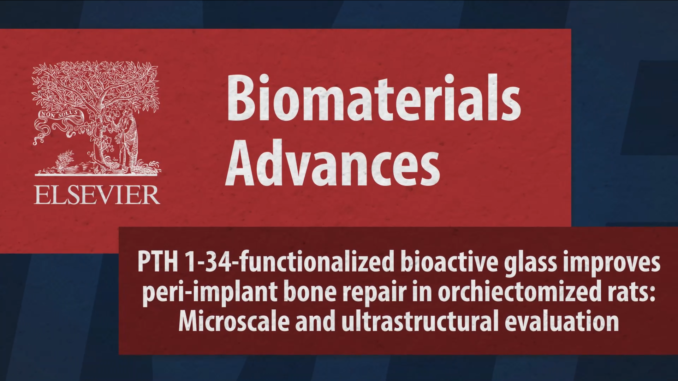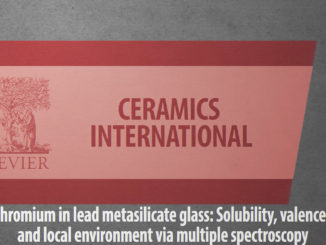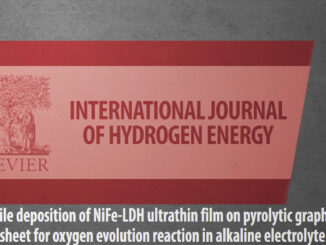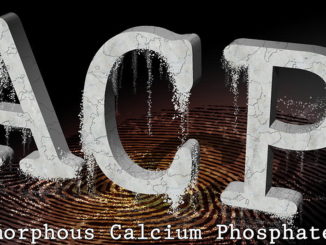
PTH 1-34-functionalized bioactive glass improves peri-implant bone repair in orchiectomized rats: Microscale and ultrastructural evaluation
Abstract: The objective of this work was to investigate the use of Biogran® functionalized with parathyroid hormone (PTH) 1–34 by sonochemistry for the local delivery of this anabolic agent to the implant site. The effects of Biogran® and topical administration of PTH 1–34 on peri-implant bone regeneration were evaluated from the microscale to ultrastructural levels in healthy (SHAM) and orchiectomized (ORQ). While some animals only received a titanium implant in their tibial metaphyses (CLOT group), in others the peri-implant defect was first filled with Biogran® either without or with PTH 1–34 functionalization (BG and BGPTH groups, respectively) prior to implant installation. Osseointegration was characterized from a biomechanical perspective by measuring the removal torque with the counter-torque technique. Micro-CT was used to evaluate the percentage of bone volume, trabecular thickness, number and separation, and bone-implant contact (BIC). Dynamics of new bone formation were assessed by measuring fluorochrome area, daily mineral apposition rate, and neoformed bone area using confocal laser microscopy. RT-PCR was performed to evaluate ALP and osteocalcin expression. The interface between newly formed bone and Biogran® was examined using scanning electron microscopy (SEM) and scanning transmission electron microscopy (STEM) at the micro-and nanoscale, respectively, while elemental analyses were completed in SEM with energy-dispersive X-ray spectroscopy (EDS). STEM imaging demonstrated the intimate attachment of bone to Biogran® (nanoscale level). Overall, the results suggest that the effectiveness of the topical administration of PTH 1–34 at the implant site seems enhanced in osteoporotic bone, promoting peri-implant bone regeneration to comparable levels in healthy conditions.
Author(s): Gomes-Ferreira, P.H.S.; Micheletti, C.; Frigério, P.B.; Batista, F.R.S.; Monteiro, N.G.; Bim-júnior, O.; Lisboa-Filho, P.N.; Grandfield, K.; Okamoto, R.
Biomaterials Advances
Published: March 2022, Volume 134, 112688
DOI: https://doi.org/10.1016/j.msec.2022.112688
CDMF
The CDMF, hosted at the Federal University of São Carlos (UFSCar), is one of the Research, Innovation and Dissemination Centers (RIDC) supported by the São Paulo State Research Support Foundation (Fapesp), and also receives investment from the National Council Scientific and Technological Development (CNPq), from the National Institute of Science and Technology of Materials in Nanotechnology (INCTMN).




